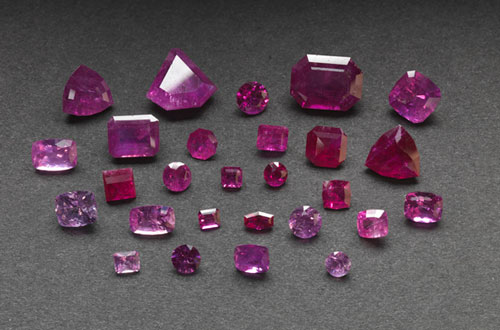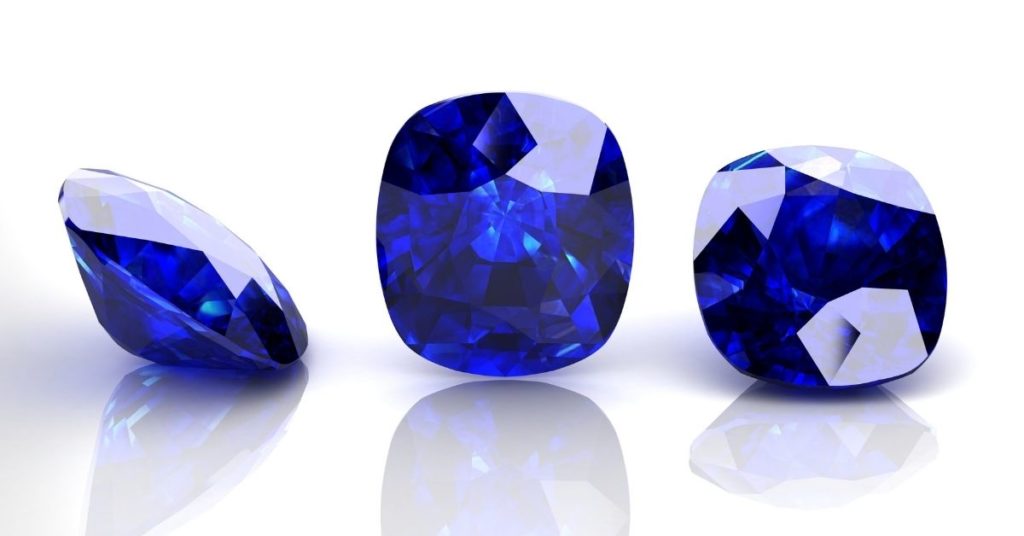What is Corundum, and How does it Relate to Gemstones?
Corundum, often referred to as the "mother of gemstones," plays a pivotal role in the fascinating world of gemology and jewelry. This precious mineral, renowned for its durability and beauty, is a vital constituent of various gemstones, especially sapphires. Additionally, advancements in science and technology have enabled the creation of synthetic sapphire with impressive qualities. In this article, we will delve into the intricate details of corundum, its significance in the realm of gemstones, and the intriguing world of synthetic sapphires.
Corundum: Nature's Masterpiece
Formation and Characteristics
Corundum, scientifically known as aluminum oxide, is a mineral that owes its name to the Sanskrit word "kuruvinda." It is predominantly composed of aluminum and oxygen atoms, which arrange themselves in a hexagonal crystalline structure. This unique structure is one of the key reasons behind corundum's remarkable properties.

Corundum can be found in various geological settings, such as metamorphic and igneous rocks. The mineral forms as hexagonal prismatic crystals, sometimes appearing as rhombohedrons or tabular shapes. Corundum is distinguished by its hardness, ranking at 9 on the Mohs scale, making it second only to diamond in terms of mineral hardness. This exceptional hardness ensures its durability and resistance to scratching, making it an ideal candidate for use in various applications, including gemstones.
The Color Spectrum of Corundum
One of the most intriguing aspects of corundum is its ability to display a stunning range of colors. When trace elements are present during its formation, they can influence the mineral's coloration. For example, chromium impurities give rise to the vibrant red color in rubies, while iron and titanium impurities are responsible for the blue hues found in sapphires. This diversity in color has made corundum a cornerstone in the world of colored gemstones.
Birth of a Gemstone: The Role of Corundum
Sapphires and rubies, two of the most coveted gemstones, owe their existence to corundum. Let's take a closer look at how this mineral is transformed into these precious jewels:
- Sapphires: Corundum crystals that contain iron and titanium impurities manifest as sapphires. The deep blue sapphire, with its enchanting hue, has captivated jewelry enthusiasts for centuries. Varieties of sapphires, such as pink, yellow, and green, are also treasured by gem connoisseurs, each a testament to the versatile corundum.
- Rubies: Rubies, on the other hand, are essentially red sapphires. The presence of chromium impurities lends a deep red color to the corundum crystal, transforming it into a ruby. These striking gemstones have long been associated with passion and love.
Corundum's remarkable properties, including its hardness, brilliance, and variety of colors, make it a highly sought-after material for crafting exquisite jewelry. Whether adorning a ring, pendant, or earrings, corundum's contribution to the world of fashion and adornment is undeniable.

The World of Synthetic Sapphires
A Gemological Marvel
The advent of synthetic sapphires, often referred to as "created" or "lab-grown" sapphires, has opened up new horizons in the gemstone industry. These sapphires are manufactured using advanced techniques to replicate the natural processes that occur deep within the Earth. The result is a gemstone that is physically, chemically, and optically identical to its natural counterpart.
The Manufacturing Process
The synthesis of sapphires involves two primary methods: the Verneuil process (flame fusion) and the Czochralski process (pulled growth). In the Verneuil process, powdered aluminum oxide is melted in a high-temperature flame, creating droplets that solidify into a boule of synthetic corundum. The Czochralski process, on the other hand, involves slowly pulling a seed crystal from a melt of aluminum oxide, allowing for the growth of a single crystal.
These manufacturing methods enable the production of synthetic sapphires that not only match the visual characteristics of natural sapphires but also exhibit impressive levels of clarity and color uniformity. They are used in a wide range of applications, from gemstone jewelry to industrial purposes, such as watch crystals and optics.
Ethical and Sustainable Choices
The rise of synthetic sapphires has also brought ethical and sustainable considerations to the forefront of the gemstone industry. By opting for lab-grown sapphires, consumers can avoid potential ethical concerns related to mining and environmental impacts. Additionally, the controlled environment in which synthetic sapphires are created minimizes the risk of exploitative labor practices.
Conclusion:
In conclusion, corundum, as both a naturally occurring mineral and a key component of sapphires and rubies, is at the heart of the gemstone world. Its remarkable hardness, brilliant colors, and versatility have made it a beloved gemstone material for centuries. Moreover, the advent of synthetic sapphires has added a new dimension to the gemstone industry, providing ethical, sustainable, and visually stunning alternatives to their natural counterparts.
Whether you are drawn to the timeless beauty of natural corundum gemstones or the technological marvel of synthetic sapphires, there is no denying that corundum's enduring presence continues to captivate and inspire jewelry enthusiasts and gemologists alike. It is a mineral that has, and will continue to, leave an indelible mark on the world of gemstones.
Comments
Post a Comment